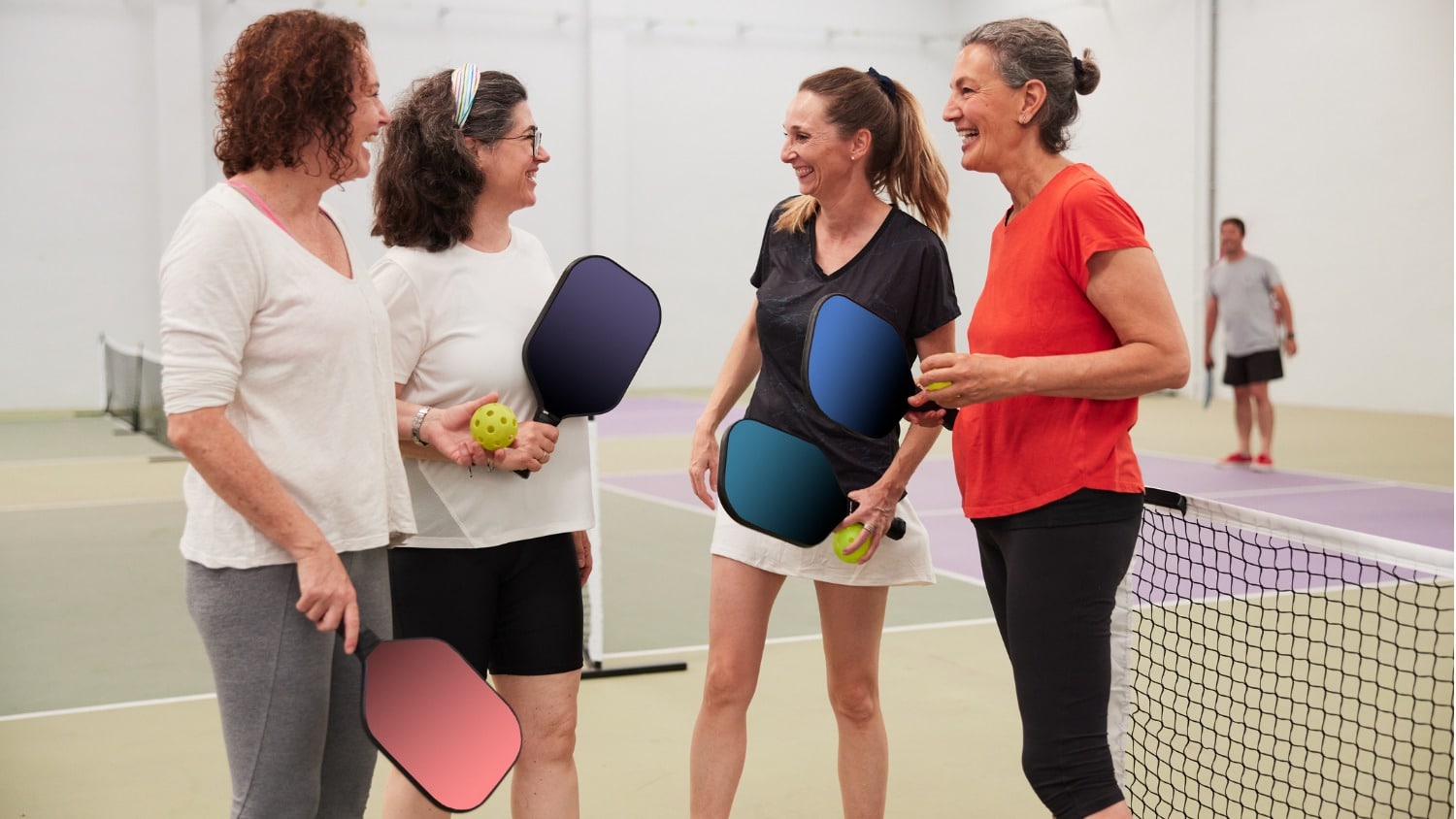
Weight Training for Seniors: The Importance of Strength Training in Your 60s
We often hear about the need for strength training at any age, but did you know that power training is even more important to functional independence?
You might associate power with elite sports or the massive athletes who “power lift” 800 pounds, and then drop it to the ground with a huge clang. You can just hear the argghhh!
But to understand what power means to you, try this: stand up from a seated position. Now, sit back down, and this time stand up slowly, using six counts to get to a full stand. Which one is harder?
Strength is a measure of how much force your muscles can generate. Power is the amount of force your muscles can generate quickly (strength x speed).
The very common functional task of rising from a chair clearly illustrates the difference between muscle power versus muscle strength. When you stand up at a normal speed the muscles contract quickly; you use power (strength x speed) to rise.
When you stand up slowly you remove the speed component, so you must rely on muscle strength alone. It’s very common to see someone who has lost leg muscle power to struggle to rise from a chair, using their arms for extra help.
Here are a few reasons that weight training for seniors matters and a few tips for how to get started.
Power and Function
Most of us recognize how speed of contraction would impact something like springing into action after a line drive in tennis. But speed of contraction is equally critical in many basic functional tasks like rising from a chair, walking, climbing stairs and reacting to a balance challenge.
For example, if you stumble on uneven ground, “catching” yourself to prevent a fall requires your ankle, leg and hip muscles to contract quickly to move your foot into place before you fall (speed of contraction-power).
In What’s Your Vitality Plan blog I shared statistics on the average decline in muscle strength – around 1–1.5% per year after age 30 – which commonly results in losing about half your strength by your mid-70s.
The rest of the story is that power is lost about 3 times faster than strength alone! And research over the past decade shows that power is more closely related to function than strength alone.
Loss of strength and power can dramatically impact your ability to engage in activities you enjoy and will gradually rob you of functional independence. Unless you have a highly physical lifestyle – one that regularly challenges both strength and power – you absolutely must train both to retain lifelong vitality.
Do you regularly lift, push, pull and throw? When was the last time you “sprang” into action? When you climb stairs, is it a slow struggle or can you easily step up – each contraction quick and powerful?
Could you easily increase your speed of walking if you were in the middle of a crosswalk and the light started to change? Or quickly change directions if something suddenly appeared in your path?
Weight Training for Seniors Is About Power
You can train both strength and power, but it requires a slightly different approach than you may be used to. The most common type of resistance training is with iron weight stack equipment where you train with a resistance that you can lift about 8–10 times in good form.
Weight stack equipment effectively trains strength but poses a barrier to power training. The standard approach to training with weight stacks requires you to use 3 seconds for each lift.
This effectively controls the momentum of the weight stack but severely limits the ability to increase the speed of muscle contractions – and remember, speed is critical to power.
Training with equipment that uses pneumatic (air), hydraulic (fluid), or magnetic resistance allows you to increase both the strength and the speed of contractions. To train power, reduce the resistance so you can increase the speed of movement.
Train with a resistance you can “lift” 14–16 times. Make sure that each individual repetition is executed as fast as possible while retaining good form and full range of motion.
You’re not trying to speed through the 16 repetitions as fast as possible. Instead, you’re trying to make each individual repetition (contraction) very quick.
So, if you’re doing a chest press, you quickly straighten the arms pushing forward in an explosive movement (1), and then return to starting position at normal speed. Repeat (2), and then return to starting position at normal speed, etc.
Training Power without Machines
Plyometric training can also help train power. If you’re pushing a medicine ball from chest level, speed training with resistance bands, whipping big ropes up and down, jumping, etc., all of these things require acceleration and speed of contraction against resistance – i.e., power!
Visit the Free Resources link at www.brilliantaging.com for ideas on training power without machines – even from a seated position!
Do you do any kind of strength training? Do you use machines for strength training or exercise without them? Do you agree that weight training for seniors is important? Please join the discussion below!
Tags Fitness Over 60






